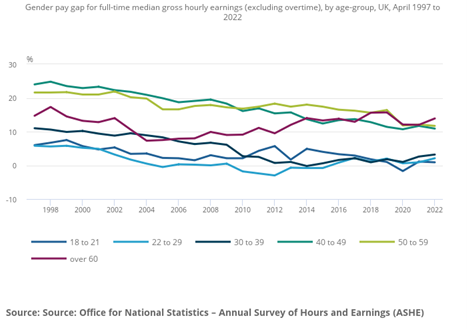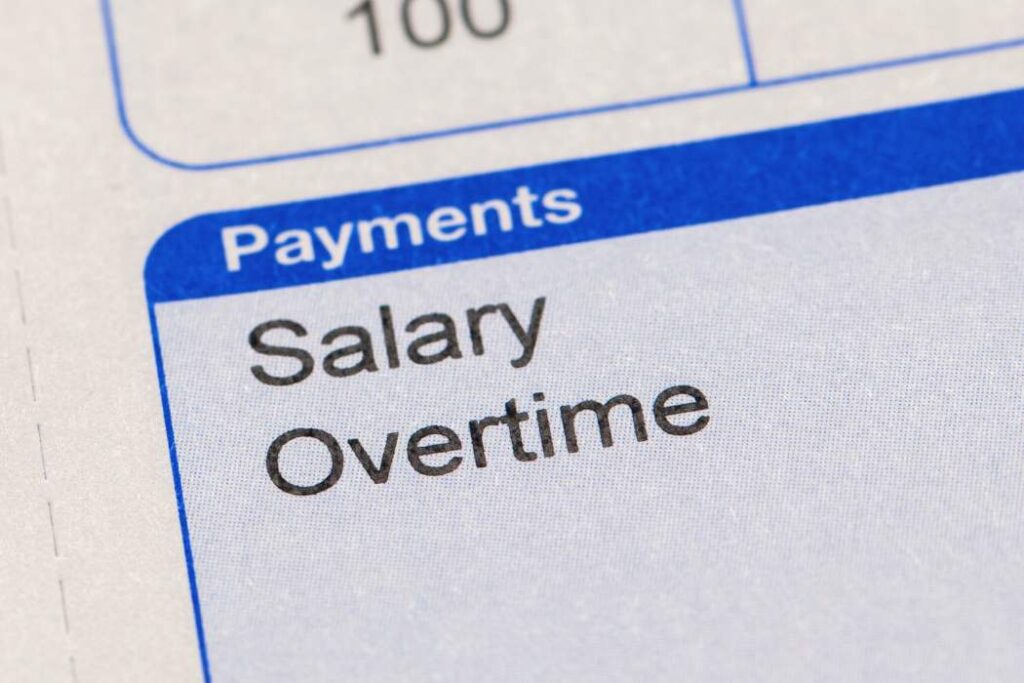Celebrating International Equal Pay Day 18 September 2023.
According to WISE findings, the gender pay gap is still problematic. Women, especially women over 40, continue to earn less than their male counterparts in similar roles. Women are also still paid less than men at four out of five employers in Great Britain and the TUC claimed that with the current state of the gender pay gap, women work for free for “two months of the year”.

Figure 1: Gender pay gap for full time employees aged 40 and over compared with younger staff.
Fortunately, salary transparency has been identified as a leading tool for closing gender and racial pay gaps.
What is Salary Transparency?
Transparency isn’t just a buzzword; it is a strategic move that can boost your organisation’s reputation while narrowing the gender pay gap. Pay transparency involves openly sharing information about compensation.
Some large organisations in the UK are required by law to be transparent with their pay and to publish their gender pay gap and gender bonus gap. Transparency can refer to sharing salary information with both current and potential employees, for example, clearly stating salary ranges in job advertisements. The aim is to foster trust, be inclusive, and to achieve pay equity.
While some leaders may hesitate to embrace the concept of pay transparency for fears of conflict, research suggests that salary transparency can also have a positive impact on areas such as individual task performance and brand equity, while a lack of transparency can ultimately damage a company’s reputation.
Closing The Gender Pay Gap With Salary Transparency
While pay transparency is not the only thing that can narrow the pay gap, it is one of the leading factors that can help. Transparency can narrow the gender pay gap in several ways:
1. Identifying Disparity
Pay transparency allows employees to compare their salaries with those of their colleagues in similar roles, highlighting any gender-based pay disparities that can be addressed.
2. Attracting Top Female Talent
Being open and honest in today’s era of social awareness can assist in attracting top female talent. Top talents are most likely to be attracted to roles where they will be recognized, fairly compensated, and rewarded.
3. Female Talent Retention
Statistically, women leave positions at a higher rate than men and are more likely to be replaced by men. When employers are open and honest about their compensation, it can foster trust and improve communication. Therefore, women may feel more confident to raise gender-based issues with their employers and trust that they will be addressed, leading to improved employee retention.
4. Job Satisfaction
Being paid fairly and transparently indicates an employer’s strong social-moral values. Knowing this, can create a sense of community and inclusion within an organization, increasing employee fulfillment, productivity, and role satisfaction.
5. Setting the Standard
As more employers see the benefit and embrace pay transparency, they will begin to set the standard for others. It may shine a positive spotlight on those employers who value inclusion and transparency, increasing their brand equity and making them a more desirable employer to work for. This will result in a more equal, honest, and inclusive job market while making it more difficult for employers to discriminate against gender.
Narrow the Gender Pay Gap and Boost Brand Equity
Being open and honest pays off in today’s era of social awareness, and a commitment to pay transparency can boost reputation and brand equity.
The gender pay gap in the UK has declined over time – in 1997, it was 27.5%, by 2022, this had dropped to 14.9%. The fall shows that we are making satisfactory progress in pay equality – however, there is still a long way to go.
Discover our Ten Steps Diversity and Inclusion Framework.

